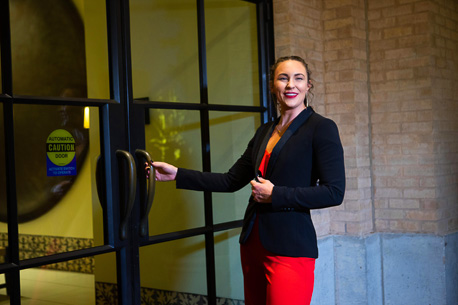The number of Opinions Should a Photographer Have So Clients Have Trust
The number of Opinions Should a Photographer Have So Clients Have Trust
Blog Article

The amount of Evaluations Ought to a Photographer Have So Shoppers Have Have confidence in
Deciding on the proper photographer is usually a daunting activity, significantly offered the plethora of possibilities accessible in most areas. One particular very important factor that likely shoppers frequently consider is the quantity of assessments a photographer has. Assessments present social evidence and help build have confidence in, giving insights in to the photographer's ability, trustworthiness, and customer care. But how many critiques ought to a photographer have for clients to experience assured of their preference?
The Importance of Assessments
Evaluations serve several functions:
Validation: Positive assessments validate a photographer's promises regarding their abilities and professionalism.
Perception: They provide genuine-environment insights in the photographer’s Functioning fashion, trustworthiness, and buyer satisfaction.
SEO: The next variety of reviews can strengthen a photographer’s visibility in engines like google, making it much easier for possible shoppers to discover them.
The best Quantity of Opinions
Whilst there isn't any definitive respond to, numerous things can influence the amount of assessments are required to determine have faith in.
Sector Standards: For photographers, Specially those in competitive marketplaces, owning at the very least twenty-thirty critiques can offer a good foundation of trustworthiness. This range ensures that there is a adequate number of feedback to reflect steady general performance instead of sporadic excellence.
Consistency and Recency: It’s not nearly quantity but in addition about regularity and recency. A photographer with fifty opinions, but only two in the past year, may not inspire as much self-confidence as a single with 30 evaluations, in which 15 are from your previous six months. Normal, current evaluations recommend ongoing reliability and relevance in their field.
Type of Assessments: In-depth, unique opinions tend to be more useful than generic ones. Potential shoppers try to look for anecdotes that explain the photographer’s professionalism, creativity, and problem-resolving capabilities. Comprehensive reviews assistance paint a clearer image of what customers can hope.
Comparison to Opponents: In very aggressive markets like wedding pictures or corporate headshots, acquiring a lot more reviews than opponents may be useful. If most nearby photographers have all-around 30 assessments, aiming for 50 may help a photographer get noticed.
High-quality vs. Quantity
When a higher amount of reviews is mostly improved, top quality shouldn’t be compromised. Some nicely-prepared, detailed evaluations is often more persuasive than a large number of obscure or lukewarm kinds. Shoppers frequently seek out:
Unique Praise: Comments on certain factors which include punctuality, creativity, flexibility, and the final top quality of photographs.
Particular Tales: Activities wherever the photographer went higher than and beyond or handled unexpected difficulties professionally.
Comparative Critiques: Suggestions from customers that have employed other photographers prior to now and can compare their experiences.
Developing a Solid Critique Base
Encouraging Critiques: Photographers ought to actively encourage satisfied shoppers to go away evaluations. This can be performed website by way of stick to-up emails, thank-you notes, or incentives which include discount rates on potential solutions.
Supplying Great Services: Continually delivering substantial-high-quality support makes certain that clients are content plus more likely to depart beneficial feedback.
Engaging with Testimonials: Responding to assessments, each constructive and detrimental, reveals that the photographer values client comments which is devoted to continual advancement.
The Effects of Negative Critiques
Several adverse testimonials between quite a few positives are usually not essentially harmful. In truth, they might insert authenticity. Purchasers know that no provider is perfect, and how a photographer addresses unfavorable feedback can reveal their professionalism and perseverance to purchaser pleasure.
Situation Study: Richard’s Images
Just take, as an example, Richard’s Photography in San Antonio, Texas. Richard’s Images has proven itself to be a reliable name as a result of a big quantity of positive opinions on platforms like Yelp and Google. They've got over fifty critiques, a lot of which might be comprehensive and up to date. Customers continuously praise Richard and his group for his or her professionalism, creativity, and talent to make consumers feel relaxed, bringing about organic and delightful photos.
Their technique includes:
Customized Assistance: Each consumer gets unique interest, guaranteeing their unique needs and preferences are satisfied.
Qualified Conversation: Richard’s team maintains a higher amount of professionalism with the Original session through to the final delivery of photographs.
Good quality Effects: The high-quality of the ultimate images speaks for alone, encouraging satisfied clients to leave positive feedback.
By maintaining a steady stream of positive reviews, Richard’s Images don't just builds rely on and also draws in new clientele who are confident in the standard of assistance they're going to obtain.
Conclusion
In summary, though there is not any magic amount of evaluations that guarantees shopper have faith in, aiming for at least twenty-30 perfectly-published, latest, and detailed assessments is an efficient benchmark for photographers. This, combined with a motivation to superb company and proactive engagement with consumers, might help Make a powerful standing and instill self-assurance in potential consumers. Quality, consistency, and recency are vital factors that, when coupled with a sufficient quantity of assessments, create a persuasive circumstance for believe in and dependability during the competitive discipline of images.